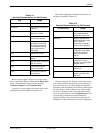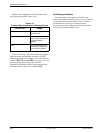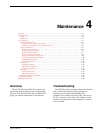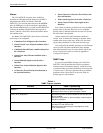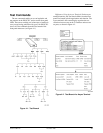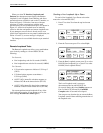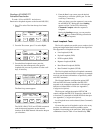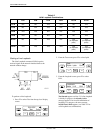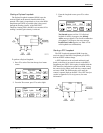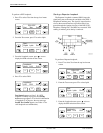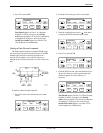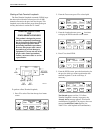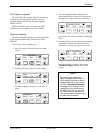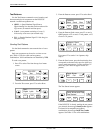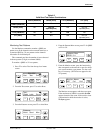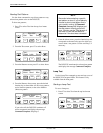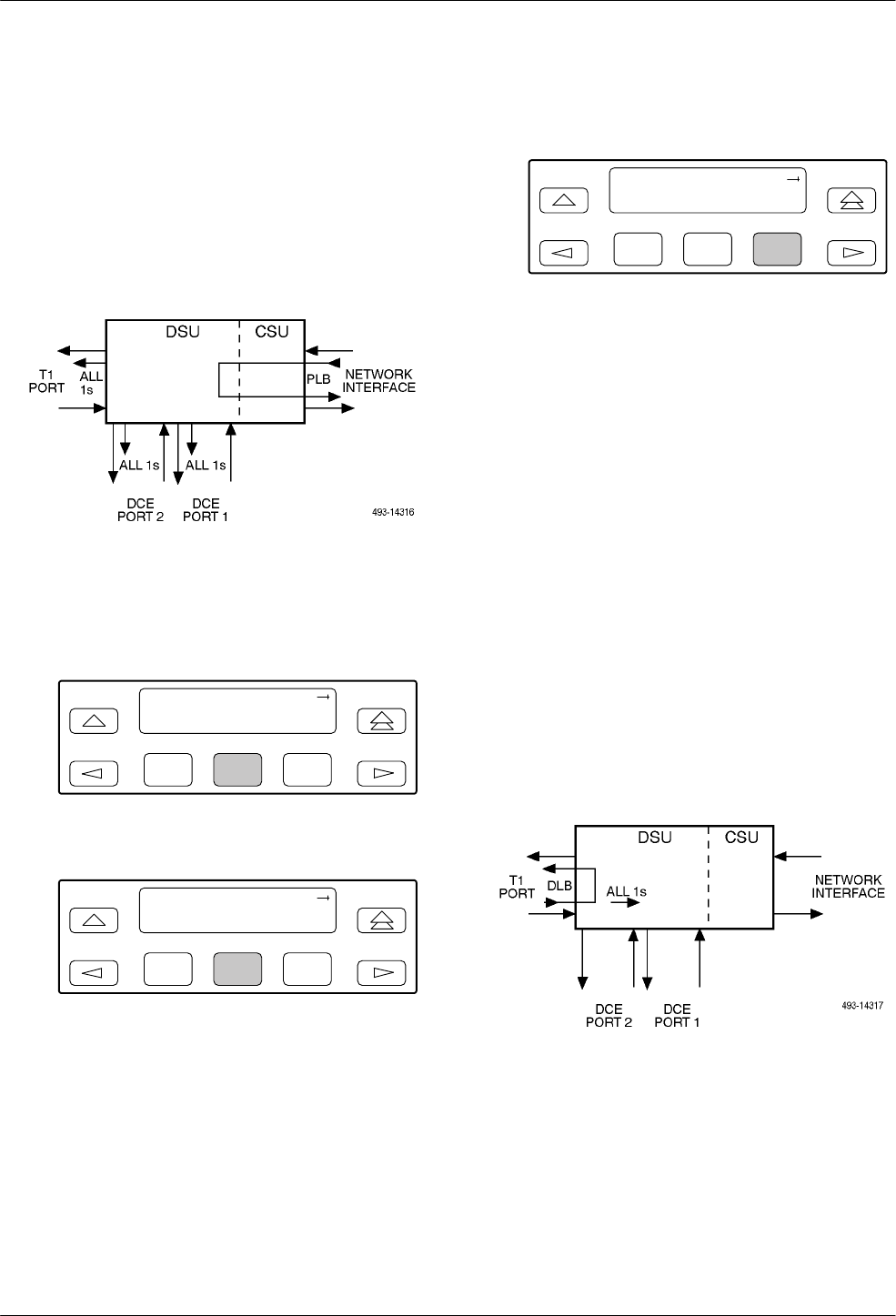
Maintenance
4-73160-A2-GB22-10 December 1996
Starting a Payload Loopback
The Payload Loopback command (PLB) loops the
received signal on the network interface back to the
network. The signal is looped back as close to the DSX-1
Drop/Insert port (DTE) as possible (after it has passed
through the framing circuitry of the DSU/CSU).
Therefore, framing CRCs and BPVs are corrected. If bit
stuf
fing is enabled, pulse density is enforced.
To perform a Payload loopback,
1.
Press F2 to select T
est from the top-level menu
screen.
F1
DS
U E
SF
Stat Test Cnfig
F2
F3
2. From the T
est screen, press F2 to select Lpbk.
F1
Test:
Rlpbk Lpbk Ptrns
F2
F3
3.
From the Loopback screen, press F3 to select
PLB.
F1
Loopback:
Abort LLB PLB
F2
F3
Test Started appears on Line 2. If a Payload
loopback is already in progress, the
Already
Active
message appears. If an invalid combination
of loopbacks is in progress, the error message
Invalid T
est Combo
appears (see T
able 4-2 for
valid loopback test combinations).
Starting a DTE Loopback
The DTE Loopback command (DLB) loops the
received signal on the DSX-1 Drop/Insert port (DTE)
back to the DTE without change.
A DTE loopback can be activated and deactivated
based on the state of an external contact on the DSX-1
Drop/Insert port (DTE). If this option is enabled with the
DTE Interface configuration option Extrn DLB, closing
the contact (relay contact sense and relay contact return)
activates a DLB. The DLB remains active until the
contact is opened. Refer to the
DSX-1 Port DTE Interface
section in Appendix D,
Pin Assignments
, for more
information.



